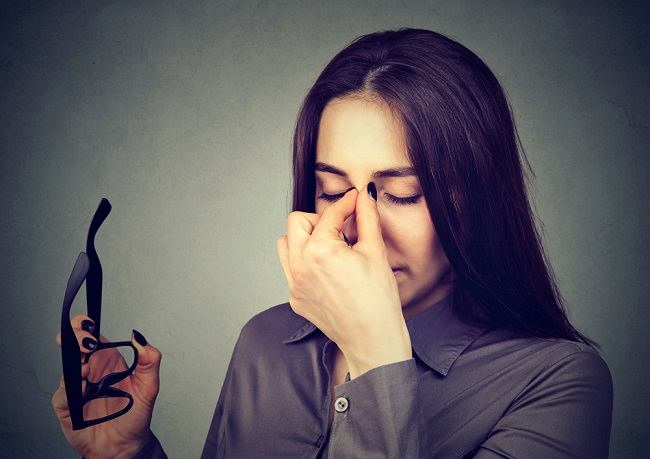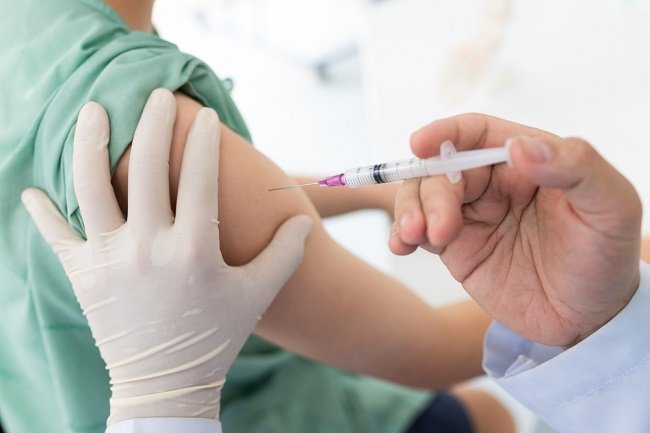MRSA (methicillin-resistant Staphylococcus aureus) is a type of staphylococcal bacteria that has become resistant tohThere are many types of antibiotics, such as amoxicillin and penicillin. MRSA infection can be characterized by the appearance of lumps on the skin that resemble pimples and are painful.
Staphylococcus aureus are generally harmless bacteria. Sometimes, these bacteria cause only a mild infection that clears up easily without needing treatment. However, in certain cases bacteria Staphylococcus It can also cause serious infections, such as pneumonia.

Infection Staphylococcus can actually be treated with antibiotics. But over time, bacteria Staphylococcus evolved to become resistant to many commonly used antibiotics. MRSA is one example of the evolution of this bacterium.
MRSA type
MRSA can cause infection in humans. MRSA infection is divided into two types, namely:
Hospital acquired MRSA (HA-MRSA)
HA-MRSA is an MRSA infection that occurs during hospitalization or due to hospital procedures and procedures. Usually, this type of MRSA infection occurs as a result of direct contact with infected wounds, unsterilized medical or surgical equipment, or contaminated hands.
HA-MRSA can cause dangerous conditions, such as sepsis (blood stream infection) and pneumonia.
Community acquired (CA-MRSA)
CA-MRSA occurs in healthy individuals who have direct contact with people with MRSA infection or in someone who does not maintain good hygiene. Transmission can occur in daycare, crowded environments, hospitals, or other medical facilities.
CA-MRSA commonly causes skin infections, such as boils, folliculitis, and cellulitis.
Causes of MRSA
MRSA bacteria can arise due to the use of antibiotics that are not really necessary or the use of antibiotics that are not correct. This allows the staphylococcal bacteria to learn how to fight off antibiotics, so the antibiotics can no longer kill them.
In some cases, MRSA can live on a person's skin or nose without causing serious symptoms. Individuals who experience it are called MRSA carrier. Even so, these bacteria can cause dangerous infections if they enter the body, for example through open wounds on the skin.
MRSA Risk Factors
There are several factors that can increase a person's risk of getting MRSA. These risk factors differ in HA-MRSA and CA-MRSA, because the environment in which infection is often spread is also different.
In HA-MRSA, factors that can increase the risk of infection include:
- Undergo regular dialysis
- Using a medical device that enters the body, such as an IV or catheter
- Undergoing hospitalization, especially if it is more than 3 months
- Have a weak immune system, for example because you have AIDS
- Living in a nursing home
Meanwhile, several factors that can increase a person's risk of developing CA-MRSA are:
- Working in a crowded environment, such as military barracks, daycare centers, or prisons
- Living in a crowded and slum area
- Sharing personal items, such as exercise equipment, towels, or razors
- Active in activities or sports that require direct contact
- Having unsafe sex, like men who have sex with men
- Using illegal drugs
Symptoms of MRSA
Just like any other skin infection caused by bacteria StaphylococcusThe signs and symptoms of MRSA skin infection are red bumps on the skin that resemble pimples. These lumps are generally warm to the touch and can quickly turn into painful, pus-filled ulcers.
In most cases, bacteria Staphylococcus remains on the skin. However, it is possible for bacteria to go deeper and cause dangerous infections in the blood, joints, bones, lungs, and heart. This is more common with HA-MRSA. Symptoms that can then appear include:
- Fever
- Shivering
- Weak
- Cough
- Headache
- Hard to breathe
- Chest pain
- Muscle ache
When to go to the doctor
Check with a doctor if signs and symptoms of a skin infection appear as above, especially those followed by fever. If left untreated, MRSA infection can spread and cause serious, life-threatening complications.
MRSA diagnosis
The doctor will first ask the patient's symptoms and medical history. After that, the doctor will perform a physical examination of the infected skin.
Next, to confirm the diagnosis, the doctor will take a sample of the wound, phlegm, blood, or urine to be examined in the laboratory. This examination was carried out to find out whether there were staphylococcal bacteria in the sample.
If staphylococcal bacteria are found, further examination will be carried out to determine whether the bacteria are resistant to antibiotics and belong to the MRSA group.
Depending on the complaints experienced by the patient, the doctor may also perform other tests, such as:
- Scanning with X-rays or CT scans, to detect pneumonia
- Echocardiography, to determine the possibility of endocarditis
MRSA Treatment
MRSA is a bacterium, so the treatment that can be done is giving antibiotics. However, as previously described, MRSA is resistant to many types of antibiotics. This makes MRSA treatment difficult.
Your doctor may try to use several antibiotics at once. The type of antibiotic prescribed by the doctor is also adjusted to the severity of the patient. Antibiotic options that may be used to treat MRSA include:
- Clindamycin
- Doxycycline
- Linezolid
- Tetracycline
- Trimethoprim-sulfamethoxazole
- Vancomycin
MRSA that causes skin infections can usually be treated with oral antibiotics. However, if the infection forms a large collection of pus (abscess), the doctor may perform a simple surgical procedure to remove and clear the pus.
Meanwhile, MRSA that causes infection to the internal organs must be treated with special care. The patient must be hospitalized and the doctor will give antibiotics through an IV. The doctor will also provide other therapies, such as:
- Fluid therapy
- Breathing apparatus, if MRSA has caused respiratory failure
- Dialysis, if MRSA has spread to the kidneys
MRSA Complications
Given that MRSA is a bacterium that is resistant to many types of antibiotics, it is possible that the antibiotics given to the patient are not immediately effective in treating the infection. If MRSA is able to beat the antibiotics given and continues to grow in the body, the infection can spread to:
- blood flow and cause sepsis or even failure of multiple organs at once
- Joints and cause septic arthritis
- lungs and cause pneumonia
- bone and cause osteomyelitis
- heart and causes endocarditis
The inflammatory reaction caused by infection in the bloodstream can have harmful effects throughout the body. One of them is a drastic drop in blood pressure.
MRSA prevention
MRSA infection can be prevented by hygienic behavior, such as:
- Clean and cover the wound with a bandage to prevent contamination
- Wash hands with soap and water or hand sanitizer periodically, especially while in the hospital
- Wash clothes with hot water and laundry soap if they have cuts on the skin, and dry clothes by drying them directly in the sun or using a hot dryer
- Do not share personal items, such as towels, razors, blankets, and sports equipment









